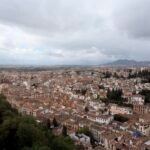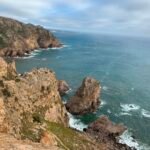Mijas is a small town in the southern province of Andalusia, Spain, located about 40 kilometers from Malaga. It is a well-known and popular town, famous for its pristine white appearance. Most visitors drive from nearby large cities to explore Mijas. For those without a driver’s license and who do not wish to take expensive taxis, buses, though somewhat circuitous, are indeed the most economical mode of transportation.
When taking the bus, I realized that Mijas is also the name of a city. Therefore, this renowned “white town” is more accurately referred to as “Mijas Pueblo.”

Mijas Pueblo is located on Spain’s “Costa del Sol,” hailed as one of Spain’s most beautiful towns. Many tourists visiting Malaga spend a day driving here. Most people choose to drive or take a taxi, with a car journey of about thirty minutes, which is the most convenient and fastest way. However, for those who wish to use public transportation, careful route planning is necessary since this is not yet a popular bus route, and sometimes even locals are unsure which bus to take. My friend and I, despite speaking Spanish, ended up taking a long detour. Although an uncle at the tourist center told us that taking one bus and one train was the most reliable option, we found a “direct” bus. After waiting for a long time under the scorching sun, we discovered that this bus had already been canceled, even though it still appeared on Google Maps and bus information boards. Eventually, we left from our original location, taking three buses to finally arrive at the town, which was quite a hassle. Although the locals were helpful, they couldn’t clearly explain where to catch the bus. However, we eventually reached our destination. Looking back, there are direct buses from Mijas to Malaga, and we took the last evening bus, which had very few passengers and was very fast—very lucky indeed.
Spain boasts excellent coastal resources, and the southern province of Andalusia is even more exceptional—with over 300 days of sunshine each year and a very pleasant climate, a section of its coast has been given the prestigious title “Costa del Sol.” Around the 1920s, the tourism industry here began to develop steadily and experienced a boom in the 1950s-60s. With the arrival of Western celebrities like Brando, Hemingway, and John Lennon, the “Costa del Sol” started to gain global recognition. The celebrity effect, unique natural resources and climate, fine wines and food, and numerous other factors attracted a large number of tourists from the UK, France, Germany, and Northern Europe to vacation. Consequently, the province of Andalusia and its “Costa del Sol” gradually developed into one of Spain’s most attractive tourist destinations, and Malaga Airport has become Spain’s fourth busiest airport, following Madrid, Barcelona, and Mallorca.
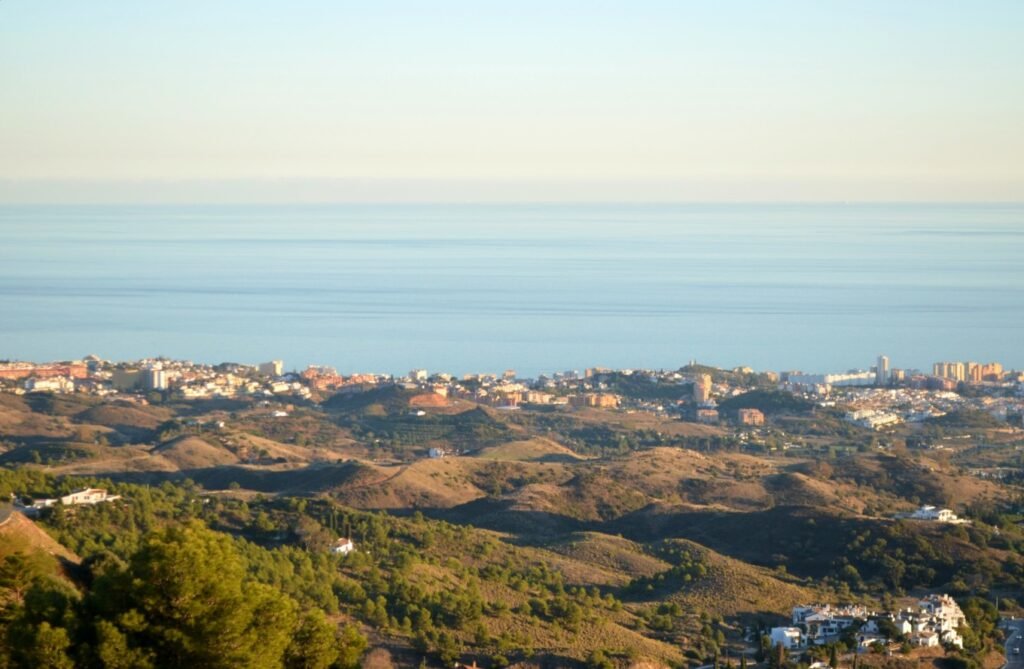
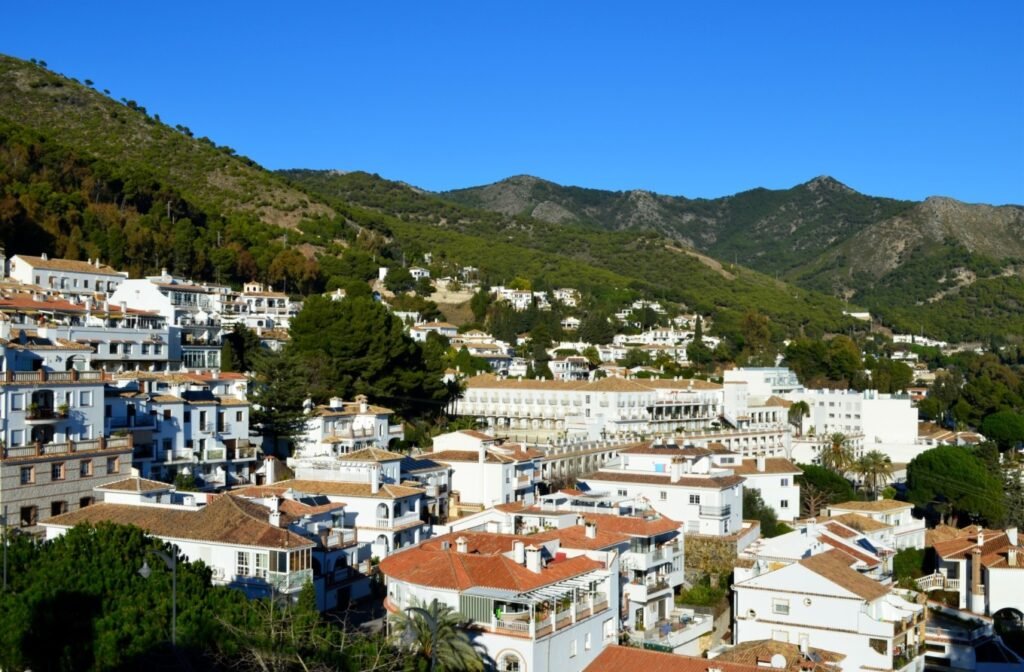
Mijas town is built against the mountains, with an elevation of approximately 428 meters above sea level. Rows of white houses are gracefully constructed up the hillside, arranged neatly yet with an orderly randomness. The town is not large, and at its entrance, there are large colorful letters spelling “Mijas,” along with a white wall embedded with vibrant little flower pots, featuring the phrase “Vive, siente y ama libre” prominently written, which literally means “live, feel, and love freely.” Combined with the leisurely atmosphere of Mijas town, it can be interpreted as “free and easy, living life to the fullest.”

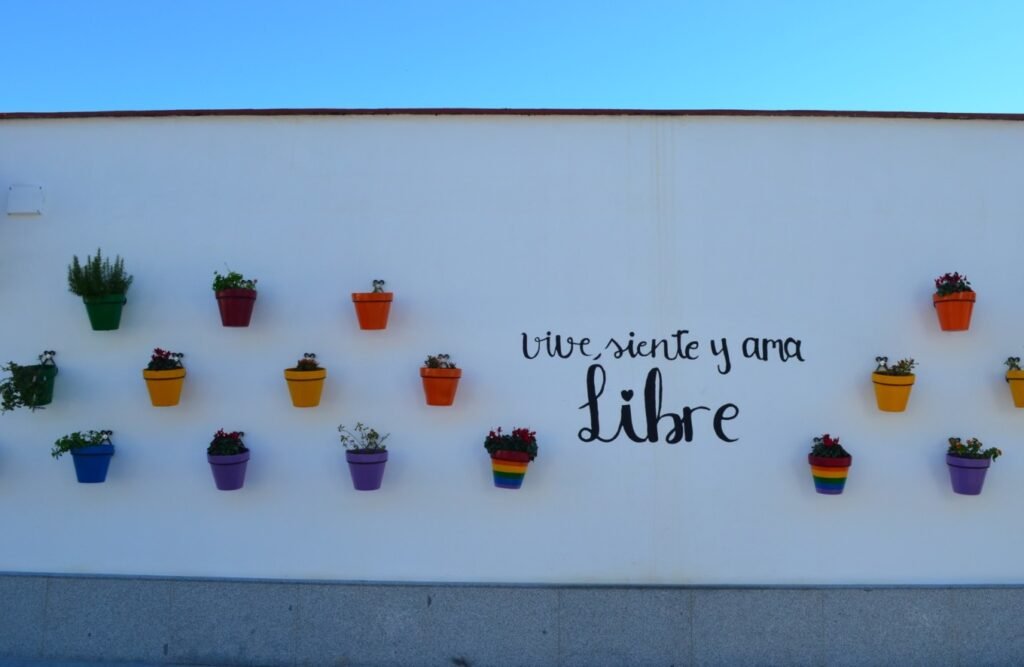
Mijas is also known as the “White Town” because all the houses in the town are white, with orange tile roofs that contrast beautifully with the distant sea and the gray mountains behind, giving the area a very pure and romantic appearance. Upon seeing this, I exclaimed, “This is the true ‘Casablanca’!” (The Spanish word for Casablanca is “Casablanca,” meaning “white house”). At the entrance of the town, there is some hustle and bustle with crowds of tourists, but as we walked deeper into the town, following the natural terrain, we gradually reached quiet, sparsely populated streets and alleys. Although all the houses are white, they are not painted flawlessly; the exterior walls show drips of paint and slight accumulation marks, revealing a touch of casualness and naturalness. Not far ahead of us, a father and son stepped off a car one after another, leisurely strolling towards home. From the open windows of the white houses along the road came the sounds of a family’s lively laughter and the enticing aroma of fried garlic, easily evoking the warm scenes of preparing dinner at home during childhood. Occasionally, a door would suddenly open, and a local girl would walk out with her happily wagging little dog, disappearing around a bend in the alley with the cool evening breeze. Every time I encounter moments like this, I deeply realize that “traveling is going from where you live to where others live.” To tourists, everything here is as white as a painting, but for the residents, this is just their daily living space and homes, with different stories behind every window and door, just like any other place in the world. It is precisely because of these snippets of everyday life that I believe this is not a “fairy-tale town” built for tourists, but a place where everyday life—chopsticks, oil, salt, soy sauce, vinegar, and tea—truly exists.

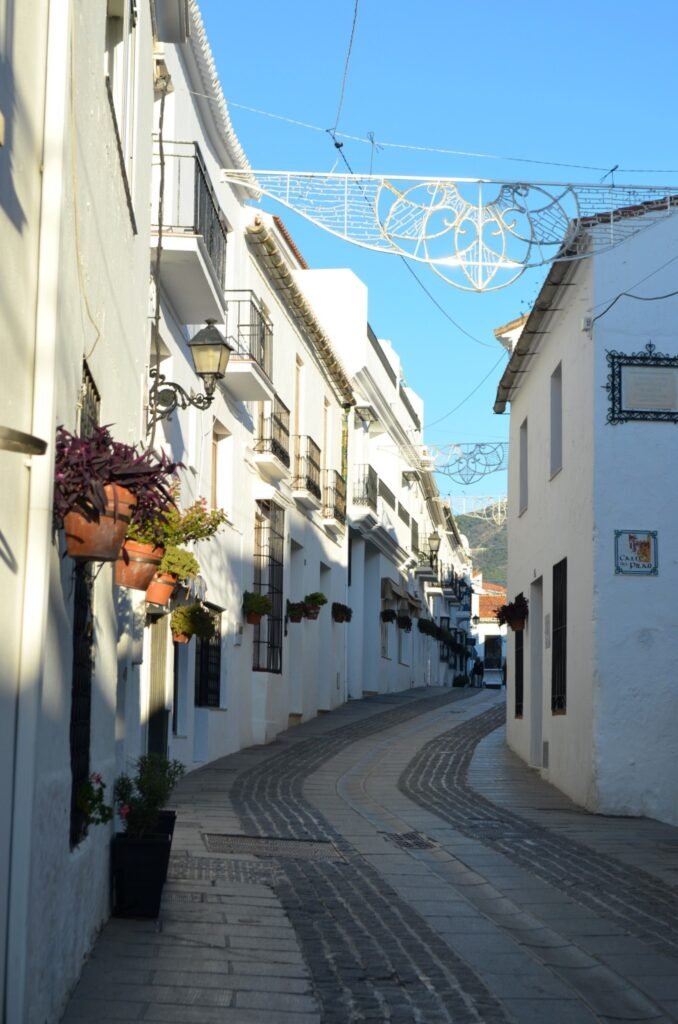
It must be said that white is a versatile color, harmonizing beautifully with any other color. A patch of green, a touch of yellow, and specks of blue all become more lively and vibrant against the white backdrop. Many street-side restaurants and cafes fully utilize the unique charm of white buildings, pairing them with a few blue tables and chairs outdoors and arranging fresh flowers and greenery. This brings a Mediterranean flair that instantly captivates, and my friend and I even joked, “Look, it’s like a little Santorini in Spain!”


However, it’s not only the restaurants and cafes; many local homes also use colors and decorations just right: small flower pots with red flowers and green leaves hanging on the walls, blue checkered front doors, and playful, unique little lights, making the pure white surroundings appear vibrant and lively. Such scenes easily remind one of the Greek islands, with gusts of Mediterranean wind gently swaying the flowers and keeping the white walls spotless.
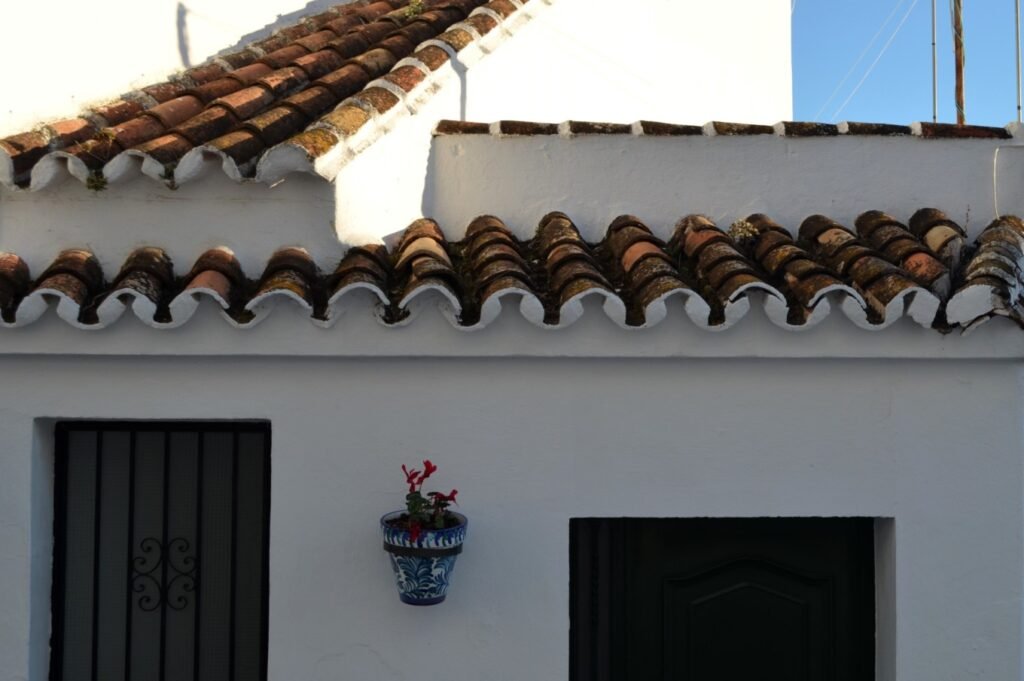
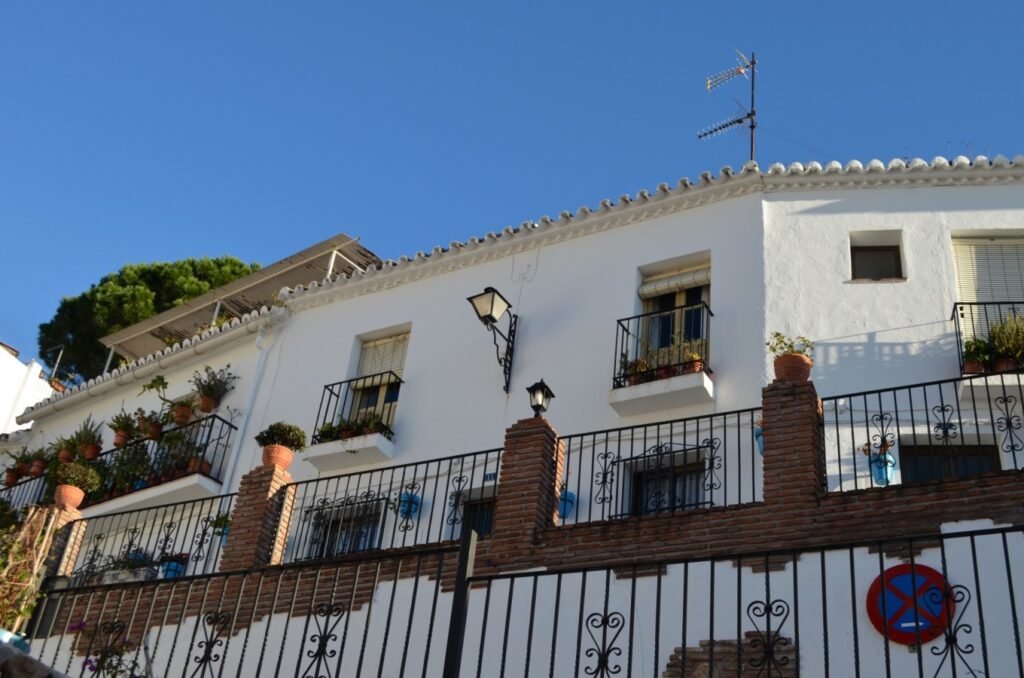
Ermita Virgen de la Peña is a landmark building in the town of Mijas. In Spanish, “Ermita” originally referred to small secluded places where monks could retreat for contemplation, and it now generally denotes small churches or shrines. Virgen de la Peña (literally “Rock Virgin”) is the patron saint of Mijas. Outside, a statue of her can be seen, while inside, her portrait is displayed. According to legend, in 1586, two local shepherd boys discovered this portrait under the guidance of a dove. This small chapel was built in the mid-17th century by several monks from the Carmelite order, carved into stone, and has been preserved to this day.
In addition to the small chapel, there is an observation deck that offers breathtaking views—el Mirador del Compás. Standing here and looking out into the distance, one can see the rolling green hills and the distant Mediterranean Sea. Even in winter, Andalusia’s warm and pleasant climate causes flowers to bloom, with specks of white houses extending all the way to the blue coast, where the famous “Costa del Sol” eagerly welcomes vacationers from around the world each year to enjoy sunshine, beaches, and delicious food.


Mijas town, although not large in area, also features an oval bullring, which is quite rare throughout Spain. Unfortunately, when we arrived in the town, it was already the afternoon, making it difficult to explore every corner of the town. If you have ample time, you can leisurely stroll around the town.
Mijas – Spain’s Unique “Donkey Town”
Mijas, known as Spain’s distinctive “Donkey Town,” has a prominent characteristic that becomes quickly apparent when visiting local souvenir shops. On the streets of Mijas, the most frequently seen animal is the donkey. Whether it’s the bronze donkey statue at the entrance of the town, a line of beautifully dressed donkeys waiting for tourists, real donkeys encountered on the streets, or donkey motifs painted on walls, the small town of Mijas seems to constantly remind visitors: this is the “Donkey City.”
A major feature of tourism in Mijas is its donkey taxis, allowing tourists to ride donkeys around the town. This custom actually originated in the 1960s, when visitors were very curious to see local farmers walking donkeys home and began taking photos with them. Over time, this evolved into a popular tourist attraction in the local tourism industry. This “donkey-based” tourism hotspot easily brings to mind Greece’s Santorini. It is worth mentioning that although there are many donkeys in Mijas, the streets are very clean because each donkey has a paper bag hung behind them, which solves the problem of donkey excrement and keeps the streets tidy.
Although it is evident that the donkeys here are well cared for and the workload is not heavy, and the local men eagerly look forward to the arrival of “donkey friends,” I don’t know why I have always found it difficult to try this form, whether it’s riding horses, donkeys, or elephants, even though I know my participation would bring some benefits to them or at least to their owners.


At dusk in Mijas, I coincidentally witnessed the scene of the “donkey team returning home.” In a small alley, four or five little donkeys were being led home by their owner. I saw the owner first remove the most ornately dressed “lead donkey” from the donkey cart, while the remaining donkeys waited quietly and obediently in the alley. Soon, all the little donkeys took off their “attire” one by one and, together with their owner, slipped through the big gate. This scene touched me deeply: it was not only the owner ending a day’s work but also these adorable little donkeys finishing their day’s labor. Humans and animals seemed to be a team, hoping that after a hard day, they could all rest well. Although I did not ride the donkey cart or disturb them, simply watching them quietly go home, I hoped that both the donkeys and their owner could happily welcome each new day.
In addition to the charmingly cute little donkeys, cats are also ubiquitous in Mijas. At the town entrance, I saw two cats with long gray fur. One stood alertly on guard, its cool and unrestrained face reminiscent of the “Cleopatra of Egypt,” while the other cuddled and napped beside it, looking lazy and peaceful. How to say, when looking into the eyes of the “Cleopatra” cat, even though it turned its head first, I somehow felt like I had lost.

Mijas is a very relaxing town in the province of Andalusia. It is peaceful, gentle, pure, and pleasant, with touches of liveliness and artistic temperament. Walking through the deep streets and alleys of the town, it feels as if time has been frozen here. This land, which blends Spanish culture with Arabic flair, stands quietly beautiful on the hills. Under the warm afternoon sun of Andalusia, surrounded by delicious food and fine wine, with the breeze gently blowing, people laughing, and time appearing especially enchanting.

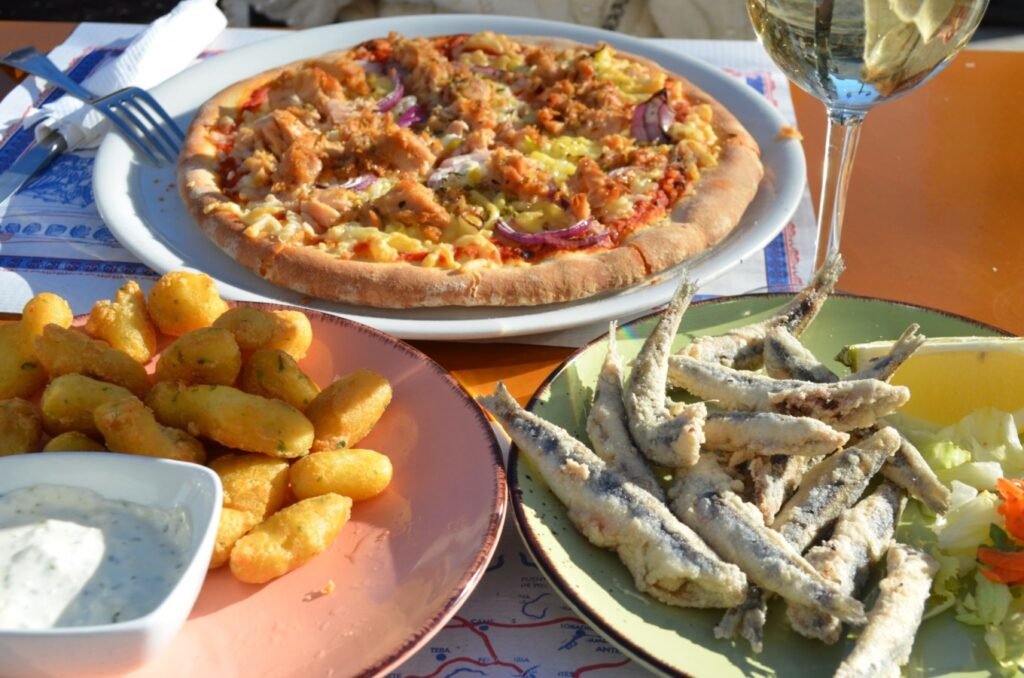
Travel Tips (Non-commercial recommendations):
- Sun Protection:
The Costa del Sol enjoys abundant sunshine with strong UV rays. Be sure to bring sunglasses, sunscreen, and other protective items. Even in winter, it’s a good idea to carry an umbrella as occasional rain showers occur. - Prices in Mijas:
Although Mijas is a small town, the prices are relatively high due to its popularity as a tourist destination. Dining options are somewhat limited, so plan accordingly. - Restaurant and Shop Hours:
Many visitors only take day trips to Mijas, so restaurants and shops close early. Be sure to check their opening hours in advance to avoid surprises. - Public Transport to Málaga:
The last bus back to Málaga departs around 7 PM, so keep an eye on the timetable at the bus stop to avoid missing your ride.

